tree root control
Woodland gardening requires coping with the roots from existing trees. Chopping out roots and amending the soil is a temporary solution at best as the roots will quickly recolonize the site. Even heavy duty landscape fabric is no match for the roots of agressive species. Three years ago I discovered a product from the Dalen Co. called weed control plus. It's a punched plastic mulch material (or paper in one version) but it is impregnated with a copper compound. It has been known for some time that such compounds cause roots to stop growing when they touch it. Root control bags and pots used by large commercial nurseries are often coated with these compounds to prevent circling roots. The fabric is light, inexpensive and very flexible. I've excavated sizeable holes for shrubs and trees (not an easy task) and lined them with the fabic to prevent root invasion. It's only been three years, but so far it's working. At the very least it gives the newly planted things a chance to get established before meeting the competition. This product is becoming more widely available at landscape centers, Do It Best stores, and by mail from Gardeners Supply in Vermont. I have no financial or other connection to this product but thought other woodland gardeners might like to give it a try.
Comments (31)
waplummer
20 years agoIn my woodland gardening, I do not even attempt to cope with tree roots, but let them be. why do you tink it is necessary?
Greenmanplants
20 years agoI think Mainegrower has a good point here. To respond to Waplummer's question, there is a lot of benefit to be gained in giving new plantings a bit of extra TLC in their first 2 or 3 years, we used to say a Penny plant in a Pound hole (I guess the equivalent today is a 10c plant(seedling) in a $10 hole). $10 to enrichen a 3' by 3' by 3' hole with mulch, compost and fertiliser taking out the competing roots and adding a bit of landscape fabric to stop the existing surrounding roots invading all that newly richened soil and exhausting it in double quick time. I've always used hessian for this as it degrades in a couple of years by which time the new sapling is well away and can compete with it's neighbours.
I find that in 2 years a 2nd year sapling planted this way will overtake a 4th year container grown sapling planted out in the same way, they establish much better and get their roots down quicker, deal with drought better etc, plus of course cost a tenth of a container grown 4 year equivalent.What I'm not clear about however, is whether this copper treated fabric breaks down itself, surely in time this will stop your new plantings growth??
Cheers Greenmanplants
Related Professionals
Port Royal Landscape Architects & Landscape Designers · Wakefield Landscape Contractors · Battle Ground Landscape Contractors · Mercedes Landscape Contractors · Pompton Lakes Landscape Contractors · Welby Landscape Contractors · Four Corners Landscape Contractors · Hawaiian Gardens Fence Contractors · San Leandro Fence Contractors · Tacoma Fence Contractors · San Lorenzo Fence Contractors · Riverside Siding & Exteriors · Rochester Siding & Exteriors · South Windsor Siding & Exteriors · Woodland Hills Siding & Exteriorsmainegrower
Original Author20 years agoIn response to Waplummer's question: if you're fortunate enough to garden among relatively benign and/or deep rooted trees such as oaks it probably is not necessary. In my case, however, the dominant species is sugar maple. They are surface rooting and incredibly agressive. (I've had roots enter the drainage holes in pots from below in the course of one season). Any time you improve the soil without taking some measure to prevent root invasion, it's an open invitation to the maple roots which will soon overwhelm whatever is planted.
In response to Greenmaplants: I'm not sure about the life of the fabric. It is "guaranteed" for 10 years; the paper form for 20 and since it is not exposed to sunlight should probably last for a good long time.
I'm not sure I understand the second part of the question, but if means does the fabric also restrict the roots of the newly planted items, the answer is yes. That's why a large hole (and a lot of digging) is necessary. Also, when an individual root encounters the copper compound (not sure exactly what it is, but probably a very stable copper oxide) it stops growing. This actually stimulates further root growth producing a compact mass. That's why commercial growers use treated pots.leslies
20 years agoI don't think it makes a lot of sense to fight with trees. I also garden around maples - which means that maples is pretty much all I have. Where the lasd was cleared for house constructions, I've been planting other tree species, but since I am not prepared to clear-cut the maples, I just let them be and don't plant other stuff around them.
stanp
20 years agoAlso hacking the trees roots certainly doesn't serve the tree very well. If you're going to continue to do that you might as well be making the argument to cut down the poor trees at the same time because they're going to eventually have problems (perhaps dieback) if that sort of thing continues. If it's your own trees on your own property that is your call, but either way that is not a nice thing to be doing.
dfaustclancy
20 years agoWell, MG! Talk about a poke in the eye with a sharp stick! I, for one, am extremely grateful that you have posted this, because I am dealing with it right now. Or will be in the spring. I want to convert the understory of some maples, some oaks, and some wild grape vines (that abutts our pond) into high shade, with wet soil (bog-like conditions) using appropriate plantings. However, I cannot get a shovel 2" into the matted tree roots which comprise this entire area. I have hit on the idea of covering the entire area with something (not landscape fabric) and spreading loam with which to plant perennials and other plantings to enjoy from our back porch. I do know that in time the roots will rise again and invade the entire newly created garden if I don't find a substance or sub-strata to help the new plantings along. MG's offering of weed control plus sounds like a winner. I was actually considering using yards and yards of jute-backed old wool carpeting. (I can just hear the gasps from here!) At least that way my new garden would last a decade or two before succumbing to all those roots. What think you?
Debramainegrower
Original Author20 years agoFor Debra Boston:
I think it would work, but I'd try it in a relatively small area first. Covering with enough topsoil to grow anything but very shallow rooted plants will require a huge amount.For example, a 10 x 12 foot area with a 1 foot depth would require almost three yards of topsoil.
A few years ago the North American Rock Society Bulletin had an article about making planting beds using 2-3 feet of leaves covered with a layre of bark, sand and peat.This might be more practical (and a whole lot cheaper) for a large area. I have not tried this because there is no access to my woodland area except by foot and wheelbarrow and the prospect of moving several tons of sand this way has been too daunting. The article may be available online at the NARGS website and if not you should at least be able to find out which issue it appeared in and perhaps purchase the back copy.Brent_In_NoVA
19 years agobump! This thread was mentioned over on the perennial forum so I thought that I would check it out. I am far from an expert in trees and dealing with three roots, but I felt that I had to jump in.
The "weed control plus" product mentioned sounds interesting, but it seems like you would have to dig a huge hole since the area inside the hole is all your plant gets. This would require cutting a lot of tree roots. I felt bad enough digging holes big enough for 1 gallon plants around a Tulip Poplar this year.
Debra_Boston: Going by what I have read, your solution of laying down a layer of carpet and covering that with enough soil to support a perennial garden sounds like a perfect solution...well, if the goal is to kill your trees. What do others think?
- Brent
Dieter2NC
19 years agoI don't think that digging around tree roots to plant one or two shrubs/plants a year would be harmful to a healthy tree. My arborist recommends root pruning on a three year cycle. By going around the drip line and cutting the roots at the depth of a good sharp spade is similar in effect to pruning the ends of the branches, it stimulates further growth and branching of the roots. The key would be not to disturb more than a 1/3 of the root mass in any given season.
jeepster
19 years agoThat's why it's called gardeneing. All gardeners work with a certain level of plant knowledge in order to work within a plants parameters. If you want to improve a woodland setting with dogwoods, redbuds and japanese maples you need to experiment, and work it out.
There is nothing intrinsically wrong with underplanting big trees with small ones - nature does it all the time.
I have found that the smaller the seedling the better the success. The gardener helps the young compete until it can run on it's own. Sometimes that combunation(s) does not work. I root prune and plant on a mound in order to gain an egde.
I doubt very seriously that one is going to kill a large tree by underplanting. The Missouri Botanical Garden here in St. Louis does it all the time - the difference being in their higher level of knowledge and experience.
gardengal48 (PNW Z8/9)
19 years agoYou're right jeepster - you won't kill a tree by underplanting (although depending on the tree you could cause a lot of problems, but that's another issue) but you can very well kill it by layering the root zone with something like carpet and piles of soil or amendments. Trees survive primarily through surface roots - covering those roots with anymore than just a couple of inches of soil or mulch can serve to deprive them of oxygen and smother them, resulting in the death of the tree.
It's a bit foolish to attempt to control tree roots - specially roots of existant trees (those already growing on the property or in the woodland and not planted by the homeowner). It is far better for the ecosystem and for the trees to learn what plants are adapted to those conditions and plant them rather than some fancy shrub or other ornamental that requires TLC and different growing conditions to be happy. There are lists of plants and books written about woodland plants and those adapted to the dry shade which is common to most woodlands and characteristic of undeplanting a large tree, even one with an aggressive surface root system like a maple. Start with small plants and small planting holes - better for the tree and easier to establish. Water as ncessary for the first two growing seasons then they should become relatively drought tolerant if you have selected well.
Don't compete with tree roots - cooperate with them by selecting plantings which are compatible with those conditions and you will maintain the health of the tree and develop a lush woodland garden as well. The most successful gardening is the grooming and augmenting of nature, not the manipulation of plants into situations not suitable for them .
jeepster
19 years agoBut you won't know if a "fancy" shrub will compete unless you experiment.
Japanes maples are not native to Missouri, but if I do it right, I can enjoy them in my woodland AND they thrive.
bigeasyjock
19 years agoI'd worry a bit about the putting with new soil over a tree's rots since as gardengal48 mentioned you can starve your tree of oxygen which is taken up by roots. Think of your over-watered potted plants. Same problem. The water takes up all the availabe air spaces and the plant dies from lack of oxygen. It drowns. So if you bring in soil or whatever don't lay it on too deep. A couple inches should be o.k. I'd think.
Also whacking back big roots, if it doesn't simply kill the tree, can make matters worse through the creation of suckers. Cut back an oak tree's roots and you'll have a thicket in no time. Sames true for many non-conifers.
Dems my two cents worth ;>
MikeSKINBUCK2
18 years agoWILL JAPANESE MAPLE ROOTS GROW DEEP ENOUGH TO INVADE THE SEPTIC DRAIN FIELD? I KNOW THAT MAPLES USUALLY ARE SHALLOW ROOTED, BUT SINCE THIS JAPANESE RED MAPLE IS OF THE DWARF VARIATY MAYBE IT WILL BE SAFE TO USE IN THE AREA OF DRAIN FIELDS. ANY COMMENTS WILL BE APPRECIATED.
THANKS.susanargus
18 years agoI've read 1/2" deep at most, any one year, for adding dirt to a tree's root area.
rebaru
18 years agoI have come back to this thread time and again, and now wonder what use to make of all the great knowledge that I found. I live on a street built up in the 50's and blessed with boulevard maples. I love it here because of those trees, and of course appreciate all they do for the environment in general and for mine in particular. But as a new gardener, it has finally sunk in that these trees are giving me a problem. My first "creation" here in 2002 was a "lasagna" bed in the front yard just behind the sidewalk hedge: spirea. "lasagna" in quotes because at that time I didn't really have much in the way of organic matter, so i used three in one and composted bagged manure. I first covered the grass with newspaper. I'm going to remake that bed this year, and was planning to go the newspaper route again to give the plants a chance before the maple roots move in. But some of the plants will be seedlings. should I cover the ground with something more long-lasting to give them more of a chance? it's not like it's a huge area - mostly the yard is at the disposal of the maple. any opinions? i also thought of planting the seedlings in a large cardboard box to protect them until they get established. I tried that with a climbing hydrangea - which is already starting up the aforesaid maple - and it is thriving, since last summer.
Green_hands
18 years agoI have zero expertise on the subject of copper treated containers and barriers but Dr Carl Whitcomb seems to take a very dim view of them.
Click on the "Copper in Containers" pdf link on this page:Here is a link that might be useful: Copper in Containers
rebaru
18 years agoi clicked but it was unavailable. anyway, i was going to use cardboard boxes that will dissolve or rot or whatever.
thanks!
kal2002
18 years agoI am dealing with invasive oak tree roots that are all over my small backyard. The oak trees belong to the people behind my property. They are planted about 25 feet from the foundation of my house. These roots are in the flowerbeds, lawn and are growing under the concrete patio. They are heading towards the foundation of my house. Any suggestions how to prevent them from going there?
Purpgar
18 years agoMy shallow back yard is bounded my fence and by a neighbor's line of Norway maples, considered large weeds and invasive by gardeners in this area. He has permitted me to cut down two of them, but my budget doesn't permit me to cut all. I am thinking of building a raised "planter" against the fence. I will first line the fence with plastic so it doesn't rot, then I will be a 2 foot , 3-sided wall to create the "planter". Would a couple layers of landscape cloth on the bottom of the area created by the wall (my planter) be enough to deter the maple roots long enough to establish the proper shrubs. Will the maple roots even try to grow above their own ground level? I am also thinking this will give me the structural height that my narrow garden needs. Any thoughts.
myloki
18 years ago"By going around the drip line and cutting the roots at the depth of a good sharp spade is similar in effect to pruning the ends of the branches, it stimulates further growth and branching of the roots." Sorry, but is this really what you want to do in a planting hole where you are going to put a young plant? Fill it with rich loamy soil and watch the alpha tree take it over. I think the book "Gardening in the Shade" by Horticulture magazine had a good article on how to tread in this delicate balance. She recommends basically the same thing as the Rock Garden Society: create planting pockets of organic matter and sand on top of the existing soil. As long as you: 1)do not cover a large area of tree roots, 2)limit it to a few inches deep, and 3)keep the planting medium light and humusy, not heavy clay, it should not adversly affect the tree. She made lasanga style planting areas with leaves and manure. She did find that the organic matter needed sharp sand or, after a few years of breaking down, it would become too dense and wet. After reading her article, I won't dig into the tree roots anymore to stuff things in (because the tree roots will grow back in even greater numbers) unless I dug a big enough hole to support the plant for a good two years (until it can compete) and lined it with newspapers. Personally, I would be hesitant to use a copper treated product - I don't like the thought of that stuff making its way into my water supply, not to mention the question of how long will it inhibit both the tree and your new planting. While I agree that we should be looking to plants that are naturally suited to compete with the tree roots, we do still have to give them a fair start to give them a fighting chance. Even a tough plant will need some soil of its own to get established before it takes on a mature planting. It is just a babe in the wood. Just my two cents.
rainshine
18 years agoWould a garden design consisting of large CONTAINERS (groupings?) with dry-shade plants be suitable for under a Norway Maple's canopy (little light, little water)? I'm thinking some pots and some in the ground BETWEEN the roots and possibly in root control bags that are not copper lined. There are such things, I hope. I can visualize pleasant arrangements using these. The planters/pots should not be ceramic in areas that have winter freezing, of course. I'm thinking of using zig-zag bamboo, Hakone grass, Epimediums, Sweet Woodruff,Lamiums, and Virginia Creeper on the wall... and of course ferns and hostas. Thoughts?
Regarding Purpgar's raised bed planter: If it is too big (say more than two square feet), wouldn't it damage the tree's root system? Wouldn't it be as damaging as adding a thick layer (more than 2") of new soil to the area?
knottyceltic
18 years agoI wouldn't have even known this was a problem if I hadn't come to this thread but we have a wooded area of our backyard which is 45x30 of mature sugarmaples, black cherry, pin cherry and beech. It's 3rd growth and as such has no understory AT ALL so when we built our house here we decided to do the best we could to restore it to a more natural looking woods. In 2 years we have added the following:
14'Red Oak (1) Downy Serviceberry (2)
Eastern Redbud (3)
Arrowwood Viburnum (3)
Red Osier Dogwood (1)
American Hazelnut (1)
Nannyberry (1)
Spicebush (3)
Winterberry Bush (1)
Silky Dogwood Bush (1)
10'Bur Oak (1)Spotted Jewelweed
White violet (2)
Purple violet (5)
Yellow violet (2)
Pale Corydalis (3)
Bloodroot (+'s)
Mayapple (+'s)
Ginger (3)
Bunchberry (3) did not survive winter
SolomonÂs Seal (3)
False SolomonÂs Seal (+'s)
Canadian Columbine (2)
Baptisia Australis (1)Lady Fern (3)
Christmas Fern (1)
Cinnamon Fern (3)
Male Fern (1)
Ostrich Fern (+Âs)
Wood Fern (1)
HartÂs Tongue Fern (2)
Maidenhair Fern (2)
Royal Fern (3)
Sensitive Fern (+Âs)
Crested Shield Fern (1)So far the only thing we didn't get to survive was the "bunchberry" which we bought at a fall sale and no foliage was present so we took a chance on it to begin with.
We don't do anything special about all the maple roots except try digging in a different place if we hit a large root. We don't take out the fibrous roots and we don't ammend the soil or do anything special except take care to give lots of water the first few years. So far so good for us, so I don't see why others can't plant shubs or perennials anywhere that their maples are...the plants tend to look that much more natural when they are planted amongst and inbetween the surfaced roots of the trees.
Barb
Southern Ontario, CANADA zone 6ajraccoon
17 years agoHELP! Kill tree roots - leg size
We have a 30 year old Cottonwood that saw it's best limited life years ago. We let it be out of loyalty for the many years of nice shade. The roots of this tree are now to the point that we cannot mow the yard without great difficulty. We've cut out high points of roots for years, but they now outnumber us. Our yard is so bumpy, the children have fallen over the roots while playing. All block walls have been repaired again and again due to damage by these roots as well. We will remove the tree this fall.
We think these roots will have a life of their own for a long time. Does anyone know of a product that might kill some of the larger underground legs by drilling holes and filling with something?
nywoodsman
17 years agoWhen planting under and around trees is important to refrain from using too much phosphate fertilizer.The surrounding trees have much more of a potential to respond to the extra nutrients and stimulated root growth from the trees will quickly overwelm your transplant.Most of the competition between plants involves light anyway,cutting out overhanging branches to allow more light to filter down will give the planting a greater advantage then digging a bigger hole.
treborsanab_sbcglobal_net
12 years agoI've heard that using Rock Salt will halt tree roots from expanding. Can anyone out there confirm this? Or is it just a hear say.
StevenDouglas
12 years agoI've heard the same thing about rock salt, but I dont think it is good for the tree... I'm not sure if you care much about the tree, but it might not live too long if you put down too much salt.
Great Kindle Fire Coupons - 2012are now available. This is a really great for an amazon e reader or tablet.
bklynebeth
10 years agoWe live in Brooklyn, NY where garden space is precious and have our vegetable garden in three 11'x4' raised beds underneath a major limb of a silver maple tree - a type known to have extremely vigorous feeder roots. The south-facing garden receives good sun because the tree only has two major branches that are in a parallel plane and the angle of the sun is ideal throughout the growing season.
What we did initially based upon advice I found on-line at the time, was put down a layer of landscape cloth (in this case, non-woven). Two years later the beds were riddled with feeder roots so dense my beet roots were growing entirely on top of the soil by end of summer. This spring we excavated all of the dirt and put a triple layer of perforated plastic landscape fabric (vs the non-woven type that is easier for the roots to penetrate). We layered this with fine metal screen and another layer of landscape fabric. We also let the edges of this barrier sandwich come out a couple of inches past the wooden planters and then covered them with bark. Interestingly one 4x5' bed is planted with four types of everbearing raspberries and although it has some feeder roots in it, they don't seem to bother the raspberries who do an excellent job of holding their own. I figure their wild cousins grow on the edges of forests so they must have some advantage. You can see a post about it on our blog, link attached.
Here is a link that might be useful: Gowanhaus - Maple-Proofing Your Raised Bed Garden
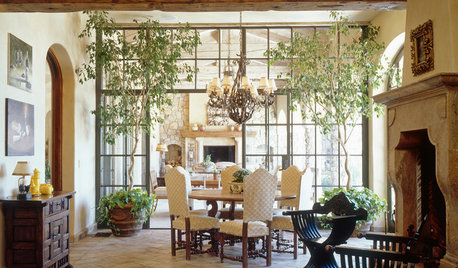
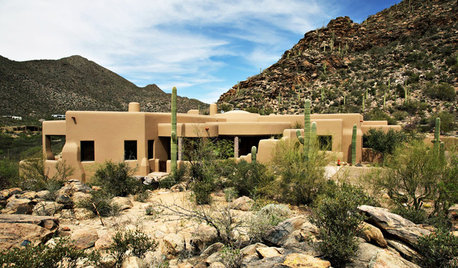

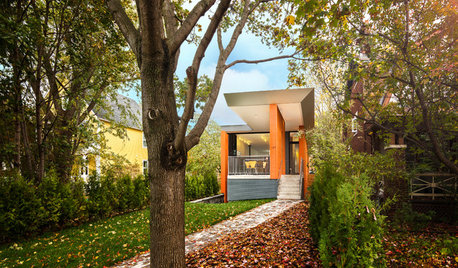
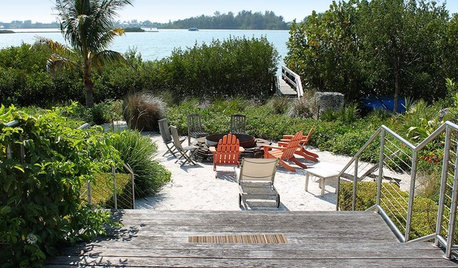
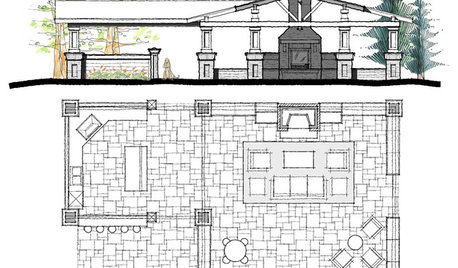



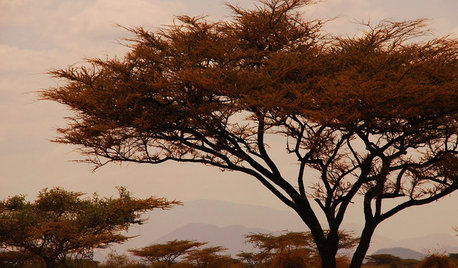







reyesuela